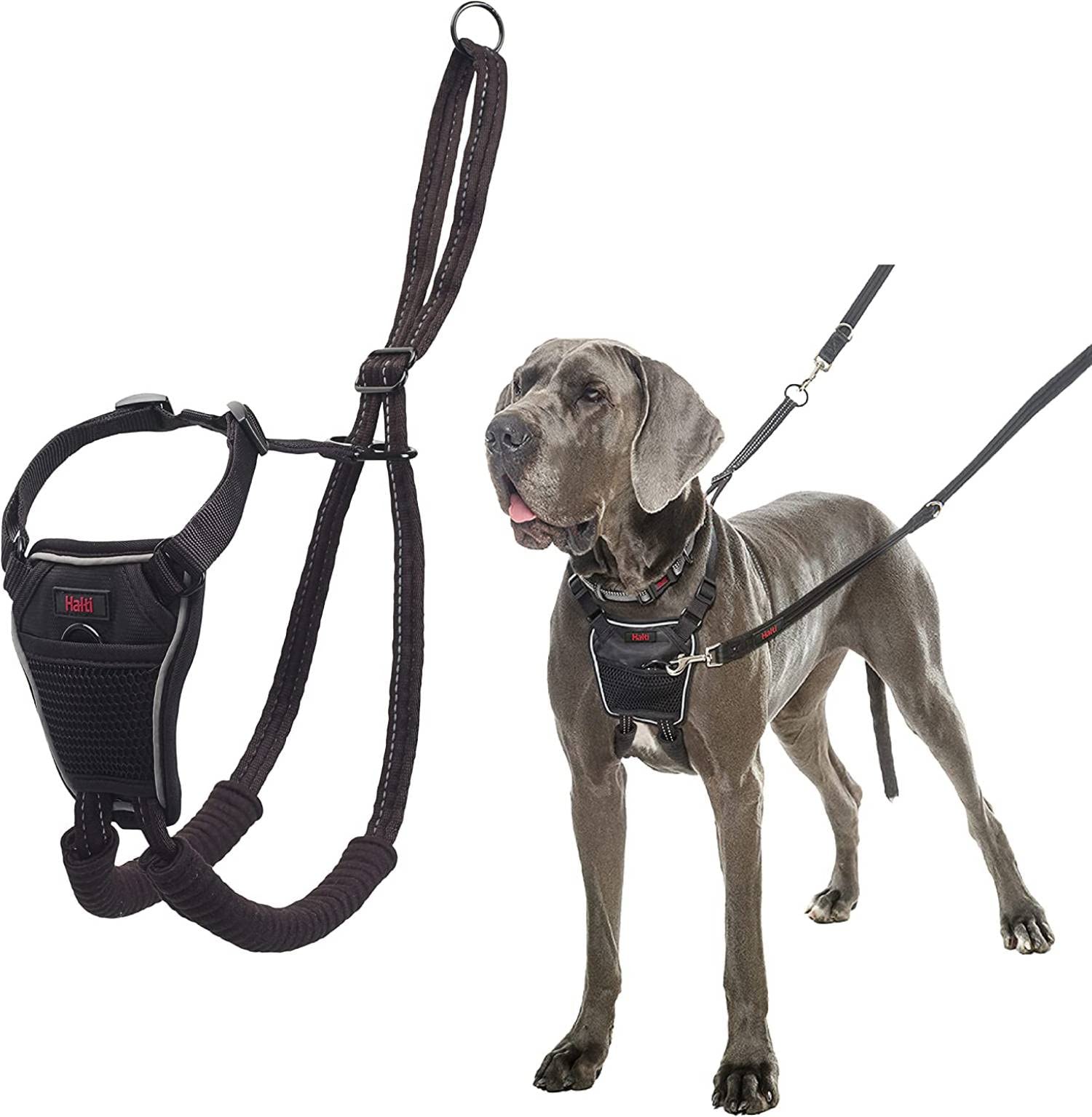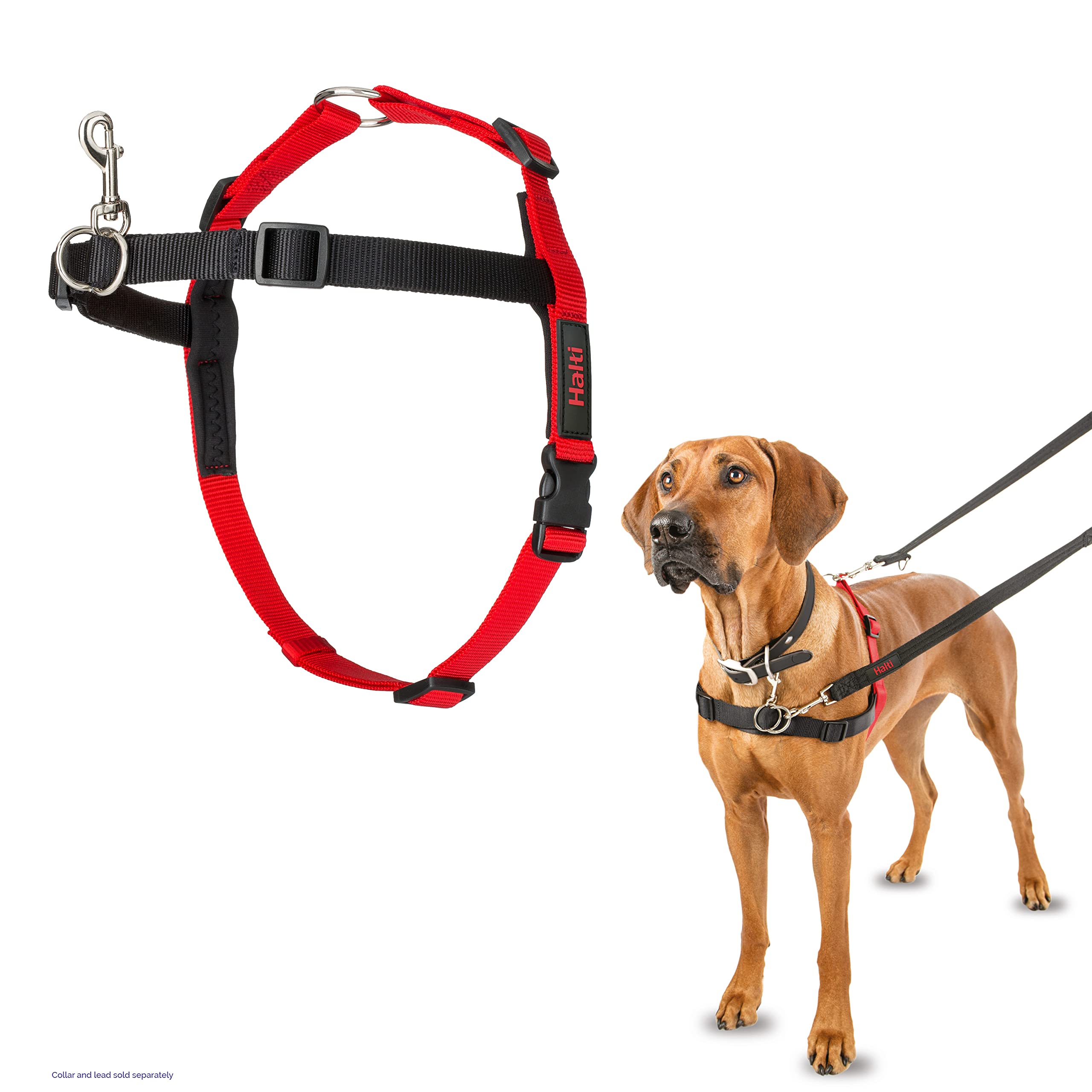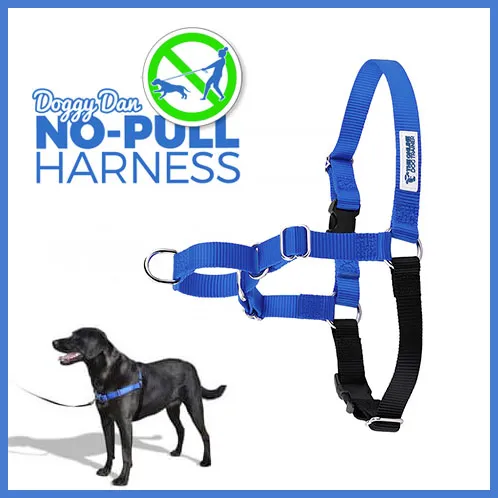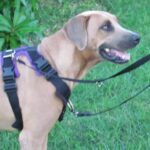Choosing the Right Harness for Dogs with Pulling Behavior: A Complete Guide
If you’re tired of your dog pulling on walks, you’re not alone. Choosing the right harness for dogs with pulling behavior can make all the difference in your walks, ensuring both you and your dog have a comfortable, enjoyable experience. With so many harness styles and features available, it can be overwhelming to figure out which one is best for your dog. The key lies in understanding your dog’s behavior and selecting the harness that will give you the best control while keeping your dog comfortable. In this guide, we’ll explore various types of harnesses, key features to look for, and expert recommendations to help you find the ideal solution for your dog’s pulling behavior.
Why Choosing the Right Harness Matters for Dogs with Pulling Behavior
When your dog pulls on walks, it not only makes the experience less enjoyable for both of you but can also lead to discomfort or injury. A poorly fitting harness or one that isn’t designed for pulling can cause chafing, restricted movement, or lack of control. By choosing the right harness for dogs with pulling behavior, you can reduce pulling and enhance your dog’s comfort while walking.
A harness designed for dogs that pull will help redirect their energy and movements, making it easier to maintain control. Whether you’re dealing with a puppy still learning leash manners or an adult dog with established pulling habits, the right harness can significantly improve both your experience.
Types of Harnesses for Dogs with Pulling Behavior
There are several types of harnesses to consider when dealing with pulling behavior. Understanding the pros and cons of each type will help you make the right choice for your dog’s specific needs.
1. Front-Clip Harness: Best for Strong Pullers
Description: A front-clip harness attaches the leash at the dog’s chest. This design helps redirect the dog’s movement by guiding their body to the side when they pull, making it easier to control their direction.
Benefits:
- Effective Control: The front clip provides better control, especially for strong pullers.
- Training Assistance: This design utilizes natural physics to help train your dog to walk without pulling. When they try to move forward, the harness gently redirects them.
Ideal For:
- Dogs that exhibit strong pulling tendencies or are still in training.
Example: The PetSafe Easy Walk Dog Harness is a top choice for front-clip harnesses. Its minimalist design and effective control help reduce pulling behavior with ease.

ALT Text: Choosing the right harness for dogs with pulling behavior – PetSafe Easy Walk Dog Harness for effective control.
2. Back-Clip Harness: Comfortable for Smaller, Well-Behaved Dogs
Description: The back-clip harness attaches the leash to the back of the harness, usually between the shoulder blades.
Benefits:
- Less Tangling: The leash attachment on the back is less likely to get tangled, providing more freedom of movement.
- Comfortable: This style is comfortable for well-behaved dogs that don’t pull excessively.
Ideal For:
- Smaller dogs or dogs that are well-behaved on a leash or don’t pull much.
Example: The Ruffwear Front Range Dog Harness is a great option for smaller dogs that don’t pull excessively but still need a comfortable, durable harness.
3. Dual-Clip Harness: Flexible and Versatile
Description: A dual-clip harness provides both front and back leash attachment points, offering flexibility in managing your dog’s pulling behavior.
Benefits:
- Versatility: You can easily switch between front and back clips, depending on the situation. The front clip helps when your dog is pulling, while the back clip can be used when you’re walking without pulling.
- Great for Training: A dual-clip harness offers more control and can be adapted as your dog improves their leash behavior.
Ideal For:
- Owners looking for a flexible option that can be used in different walking situations.
Example: The 2 Hounds Design Freedom No-Pull Harness combines a front-clip and back-clip design, offering versatility and comfort for dogs with pulling behavior.
Key Features to Consider When Choosing the Right Harness
Choosing the right harness involves considering several important factors that contribute to your dog’s comfort and the effectiveness of controlling their pulling behavior.
Fit: Getting the Right Size and Comfort
A proper fit is essential when selecting a harness. A poorly fitting harness can cause discomfort, chafing, or even injury. Make sure to measure your dog’s chest girth and neck size before purchasing, and ensure the harness fits snugly but allows room for two fingers between the straps and your dog’s skin.
Tip: Look for a harness with adjustable straps to ensure the perfect fit for your dog.
Material and Durability: Ensuring Longevity and Comfort
Look for a harness made of lightweight but durable materials, such as nylon or soft cotton. These materials provide the strength needed to manage pulling behavior while preventing discomfort from excessive pressure or rubbing.
Tip: Consider padded or velvet-lined straps, especially if your dog has sensitive skin.
Ease of Use: Making Walks More Enjoyable
Quick-release buckles and easy-to-adjust straps make putting on and taking off the harness a breeze. A harness that is easy to put on and remove will make your walks more enjoyable and stress-free.
Tip: Harnesses with quick-release buckles can save time and reduce frustration during walks.
Expert Recommendations for the Best Harnesses
To help you narrow down your choices, here are some expert-recommended harnesses that are specifically designed for dogs with pulling behavior.
PetSafe Easy Walk Dog Harness
This front-clip harness is widely recommended for dogs that pull. Its minimalist design is effective in redirecting pulling behavior and is comfortable for dogs of various sizes.Ruffwear Front Range Dog Harness
Ideal for smaller dogs or those that don’t pull excessively, the Ruffwear Front Range offers adjustable, padded straps that provide both comfort and control.2 Hounds Design Freedom No-Pull Harness
This dual-clip harness provides flexibility for both front and back attachments, giving you full control over your dog’s behavior during walks.
Where to Buy the Best Harnesses for Dogs with Pulling Behavior
When it comes to finding the best harnesses for dogs with pulling behavior, FoundMyAnimal offers a range of high-quality, comfortable options. They provide harnesses made from durable, lightweight materials that help manage pulling without sacrificing comfort. Visit FoundMyAnimal for a selection of premium harnesses designed to make your walks enjoyable and stress-free.
Use mytopdeals10 at checkout for 10% off your order, ensuring you get the best harness at a great price!
In the next section, we will cover how to properly fit and use a harness for your dog and provide training tips to help reduce pulling behavior. Stay tuned!
This first half of the article covers the essential types of harnesses and key features to consider when choosing the right harness for your dog with pulling behavior. Stay with us as we dive deeper into fitting and training tips in the next section!
How to Properly Fit and Use a Harness for Dogs with Pulling Behavior
Fitting your dog’s harness correctly is crucial to ensure their comfort and maximize its effectiveness in controlling pulling behavior. Here’s a step-by-step guide to help you properly fit and use a harness for dogs with pulling behavior.
Step-by-Step Guide to Fitting Your Dog’s Harness
Choose the Right Harness Size:
Measure your dog’s neck and chest girth. Most harnesses come with size charts to guide you in selecting the right one based on your dog’s breed and size. Ensure that the harness is snug but not tight — you should be able to fit two fingers comfortably between the harness and your dog’s skin.Adjust the Straps:
Once you’ve chosen the correct size, adjust the straps to ensure a secure fit. The harness should sit comfortably without chafing, and the straps should not restrict movement. For front-clip harnesses, the chest strap should sit directly in front of your dog’s shoulders.Check the Fit:
Ensure that your dog is comfortable in the harness by having them wear it for a few minutes inside the house. Watch for signs of discomfort, like excessive scratching or attempts to remove the harness. Adjust the fit accordingly to ensure it doesn’t rub or irritate your dog’s skin.Attach the Leash:
Once the harness is properly fitted, attach the leash to the front clip (for pulling dogs) or the back clip (for well-behaved dogs) based on the harness type you’ve selected. Start your walk with calm, short steps to give your dog time to adjust to the harness.
Training Tips for Dogs with Pulling Behavior
Start with Short Walks: Begin with short, positive walks to help your dog get used to the new harness and leash attachment. Gradually increase the distance as your dog becomes more comfortable.
Use Positive Reinforcement: Whenever your dog walks calmly without pulling, offer praise and treats. Positive reinforcement will help them associate good behavior with rewards.
Redirect the Pulling: If your dog starts pulling, stop walking immediately. Wait for them to calm down before continuing. This teaches them that pulling doesn’t get them anywhere.
Consistency Is Key: Training takes time. Be consistent with your approach, and don’t forget to reward your dog for walking without pulling.
Where to Buy the Best Harnesses for Dogs with Pulling Behavior
When it comes to finding the best harnesses for dogs with pulling behavior, FoundMyAnimal offers a selection of top-rated harnesses designed for both comfort and control. Their handmade and durable harnesses are ideal for managing pulling while ensuring your dog’s comfort during walks. Visit FoundMyAnimal today and browse their collection of high-quality no-pull dog harnesses.
Don’t forget to use the discount code mytopdeals10 to get 10% off your order and enjoy a hassle-free shopping experience.

ALT Text: Harness for dogs with pulling behavior – Comfortable, durable, and designed for control.
Conclusion: Finding the Right Harness for Your Dog’s Pulling Behavior
In conclusion, choosing the right harness for dogs with pulling behavior is essential for both your dog’s comfort and your control during walks. The front-clip harness is ideal for strong pullers, while back-clip harnesses are great for well-behaved dogs. For versatility, dual-clip harnesses offer flexibility to manage different walking situations.
When selecting a harness, always prioritize fit, comfort, and durability. By choosing the right option, you’ll not only reduce pulling but also make walking more enjoyable for both you and your dog. Don’t forget to visit FoundMyAnimal for top-quality harnesses, and use mytopdeals10 for 10% off your order!
FAQs: Choosing the Right Harness for Dogs with Pulling Behavior
What Type of Harness Is Best for a Dog That Pulls?
The front-clip harness is the most effective for dogs that pull. It redirects the dog’s movement by guiding them to the side, making it easier to control their direction and stop them from pulling forward.
Can I Use a Back-Clip Harness for a Dog That Pulls?
While a back-clip harness is ideal for well-behaved dogs, it may not be effective for dogs that pull excessively. However, if your dog pulls lightly, you can use a back-clip harness or consider a dual-clip harness for more control.
How Do I Train My Dog to Walk Without Pulling?
Use positive reinforcement and reward your dog for walking calmly. If your dog pulls, stop walking and wait for them to calm down before continuing. Over time, they will learn that pulling doesn’t get them what they want.
What Is the Difference Between a Front-Clip and Back-Clip Harness?
A front-clip harness attaches the leash to the chest, helping to redirect pulling behavior, while a back-clip harness attaches the leash to the back, providing comfort for dogs that don’t pull excessively.
How Do I Measure My Dog for the Right Harness?
Measure your dog’s neck and chest girth to find the right size. Ensure there’s enough room for two fingers between the harness and your dog’s skin, and make sure the straps are adjusted for comfort.
By following these steps and choosing the best harness for your dog’s behavior, you can ensure both a comfortable and enjoyable walking experience for both you and your furry friend. Visit FoundMyAnimal to find the perfect harness today, and enjoy 10% off with the code mytopdeals10!



